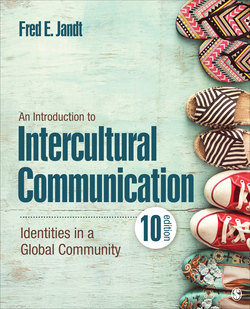Читать книгу An Introduction to Intercultural Communication - Fred E. Jandt - Страница 97
На сайте Литреса книга снята с продажи.
Summary
ОглавлениеThere have been many attempts to define the skills that make one an effective and competent intercultural communicator. The concept of intercultural communication competence is applied to individuals who have multiple cultural identities such as third cultures, multiculturalism, and postethnic cultures.
This chapter focuses on recognizing and avoiding breakdowns in intercultural communication. LaRay M. Barna developed a list of six such barriers: anxiety, assuming similarity instead of difference, ethnocentrism, stereotypes and prejudice, nonverbal misinterpretations, and language. The first four are discussed in this chapter. Anxiety refers to not being totally present in the communication transaction while focusing on one’s feelings when one doesn’t know what to do. Assuming similarity instead of difference refers to behaving as you would in your home culture. Ethnocentrism is negatively judging aspects of another culture by the standards of one’s own culture. The term stereotype is used to refer to negative or positive judgments made about individuals based on any observable or believed group membership, whereas prejudice refers to the irrational suspicion or hatred of a particular group, race, religion, or sexual orientation.
Finally, ethics of intercultural communication are presented as a guide for intercultural interactions and intercultural communication studies.
